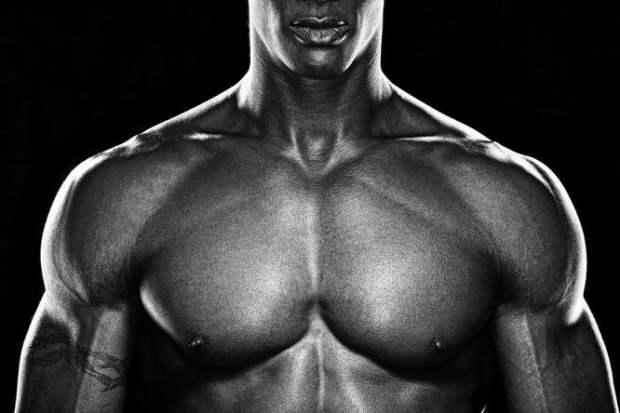
Is your chest lagging in size and not responding well to training? These three steps will enhance your chest training by fully engaging the muscle, resulting in greater stimulation. Whilst these three steps to a bigger chest only focus on the training side of muscle growth, for optimal gains a sound nutrition plan should be implemented as well as sufficient rest.
1. Let the chest do the work
Exercising the chest requires some involvement of the shoulder muscle (especially the front head), as well as the triceps (the muscle to the rear of the upper arm) when performing the popular bench press exercise. When executing an exercise with the aim of targeting a specific muscle group we can perform the movement in a manner which will place maximum stress onto the target muscle, whilst minimising secondary muscle involvement.
For the chest we can achieve this by following these simple guidelines:
1. Keep the elbows flared outward during the bench press and fly movements, so the upper arms are roughly perpendicular to the body.
2. Expand the ribcage to maximise chest involvement and minimise the front deltoid involvement.
3. Lower the bar to just shy of the chest during the bench press, and press the bar to shy of lock out.
2. Try different angles
For maximum stress the chest should be trained via various angles of resistance. The fibres of the chest fan from its origin, allowing fibre recruitment during various pressing exercises. Chest training should not be limited to just the flat bench exercises, instead try the variations which are performed on the incline and decline benches. High and low cable pulleys allow for many angles of resistance when performing the standing fly. The chest dip is also a great choice of exercise.
3. Pre-exhaust using cables
As mentioned, the chest is commonly recruited with other muscle groups such as the deltoids (shoulders) and the triceps. Trainers sometimes struggle when training the chest as the assisting muscle groups over power the exercise, or they fail and tire before the chest. To overcome this we can pre-exhaust the chest.
Pre-exhausting is the use of an isolation exercise at the beginning of a training session to solely tire the target muscle group prior to the use of compound exercises (exercises which recruit more than one muscle group, such as the bench press). For the chest we can perform the cable fly at the beginning of our workout, tiring and pumping the pectorals before we move onto the bench press or dip. When we do come to perform the bench press or dip the chest should be fatigued and therefore fail before the assisting muscles. The increased pump may also allow for a greater mind to muscle connection, further increasing focus on the target muscle. It should be remembered that a decreased resistance will likely have to be used for the bench press due to the heightened fatigue.